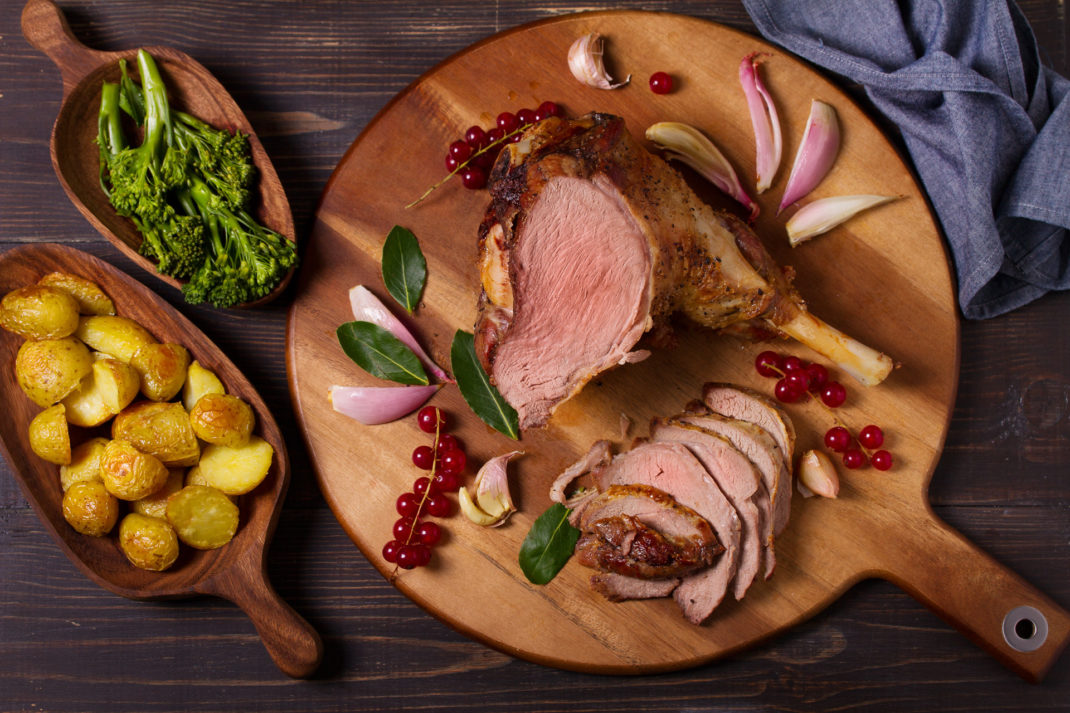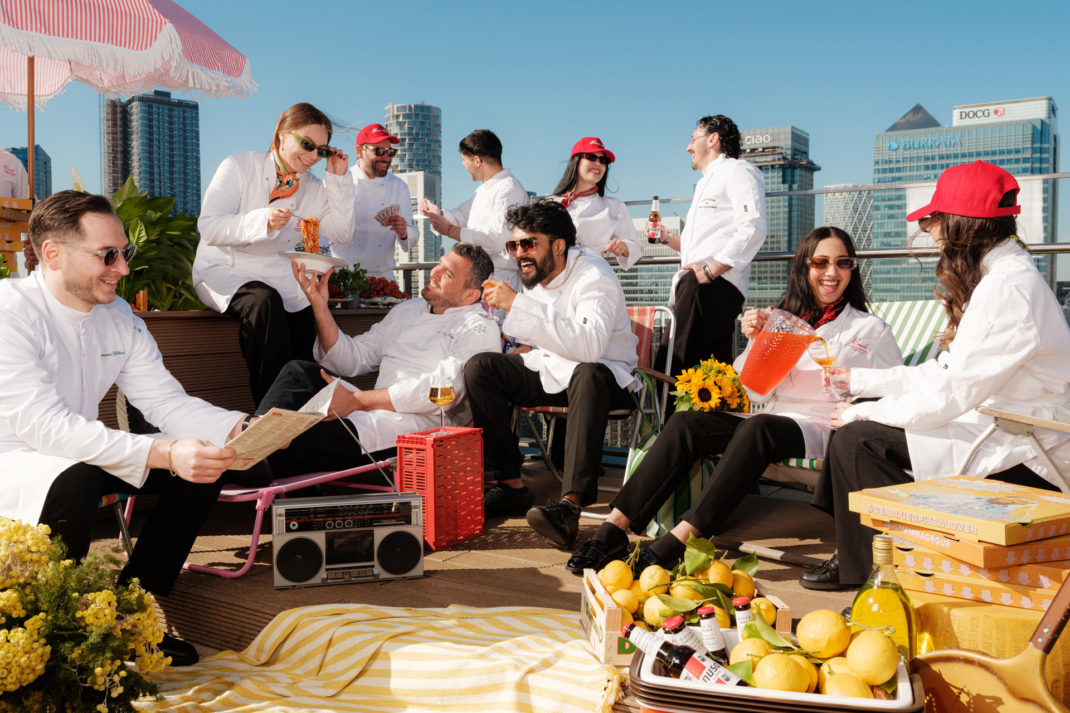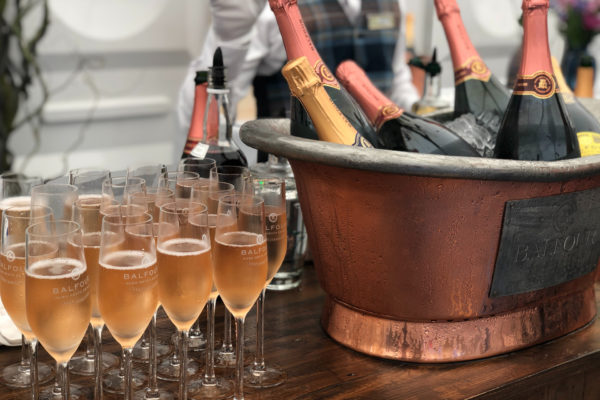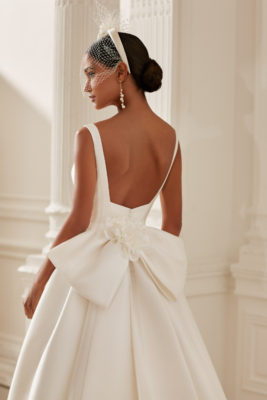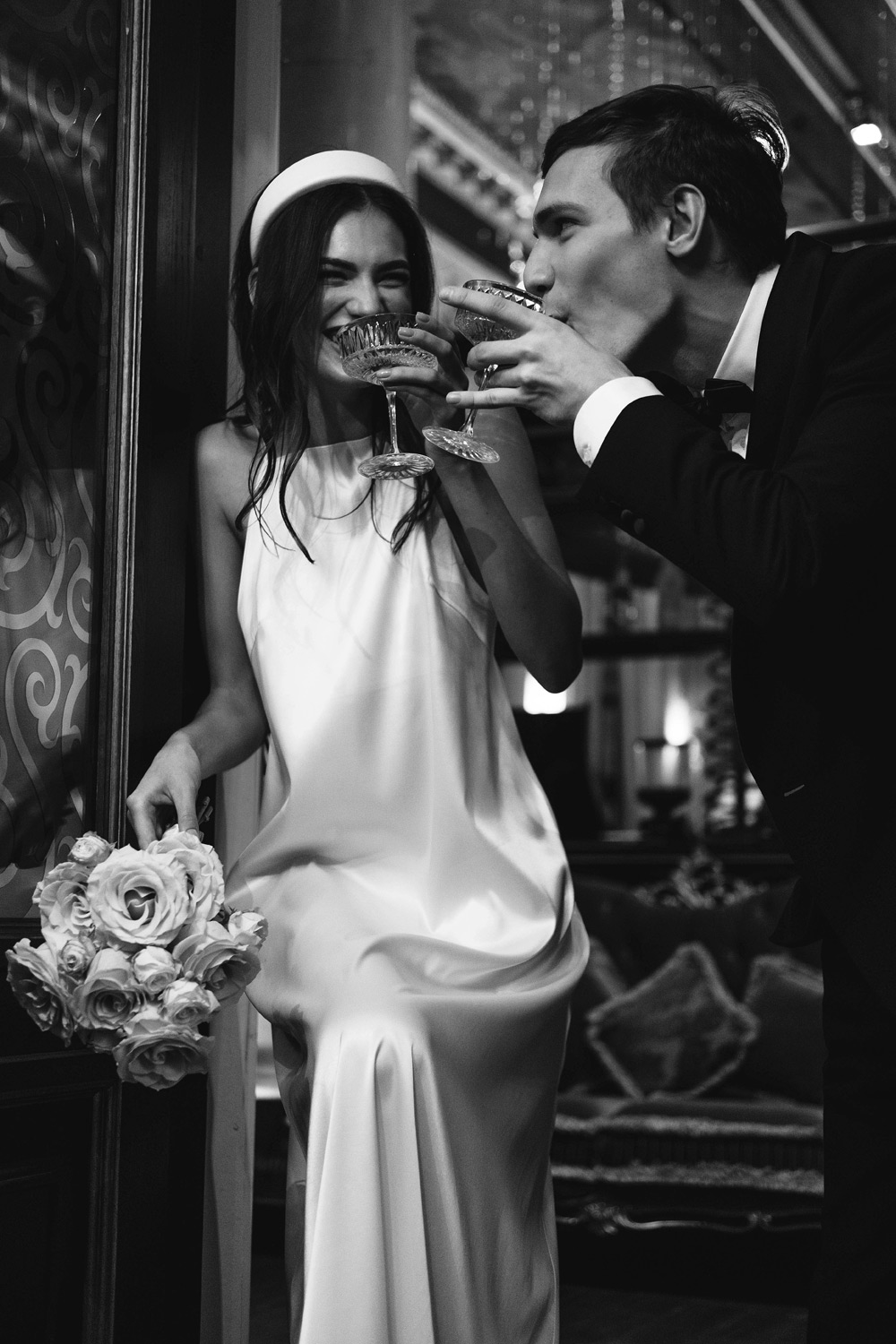
How To Match Your Champagne To Your Wedding Style
By
3 months ago
The right bubbles to pair with your festivities
There’s nothing like that post-ceremony pop of a champagne bottle at a wedding. It’s often the first drink newlyweds enjoy together after tying the knot, and the moment guests begin mingling and relaxing into the day. But which fizz best suits your celebrations? While personal preference is of course crucial, it’s important to consider the season, size and style of your wedding when deciding which champagne to go for. Here, the Champagne Bureau shares some tips on how to match your champagne to your wedding style.
Wedding Champagne: Which Variety Suits Your Event?
Classic and Traditional
Keeping things pretty traditional with a country house or hotel reception? Opt for a brut, the Champagne Bureau recommends. Brut is a crowd pleaser: it’s the most popular style of champagne, accounting for up to 80 percent of shipments to the UK – known for its dry, refreshing taste. ‘Brut champagne offers versatility, it is an excellent choice for celebrations where guests will feel part of the couple’s love story,’ notes the Champagne Bureau.
Modern Chic
For stylish city weddings with a contemporary edge, the Champagne Bureau suggests going for a Blanc de Blancs champagne. Made exclusively from white grape varieties, most commonly Chardonnay, it has a light, zesty flavour. ‘Known for its crisp, fresh, and elegant character, this style of champagne complements a clean, stylish aesthetic while still offering a touch of luxury and celebration,’ the Champagne Bureau summarises.
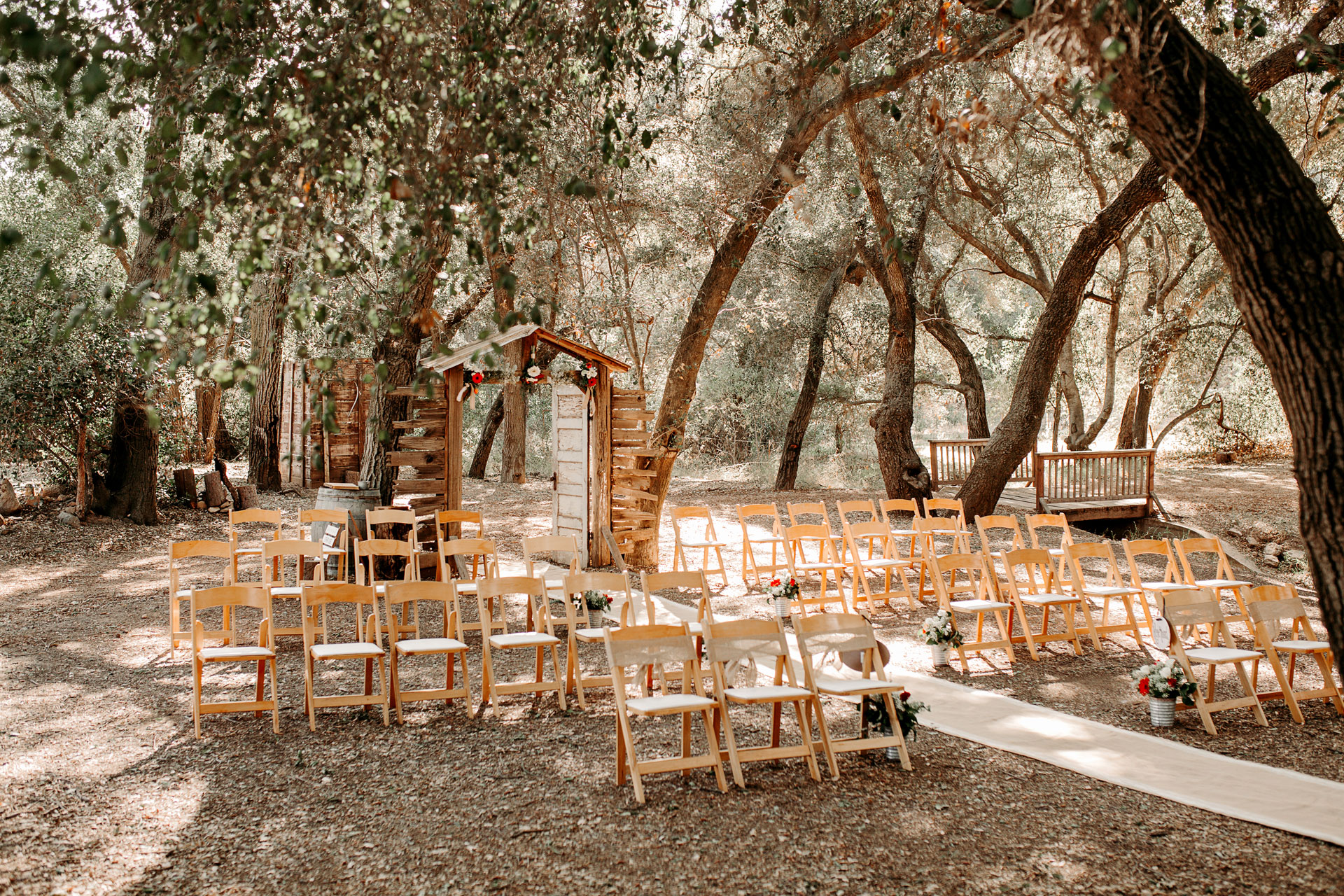
Getty Images
Outdoor and Rustic
If you’re planning a relaxed countryside affair – perhaps in a cosy Cotswolds barn or a fairy light-bedecked garden – consider a pink fizz. ‘Rosé champagne adds a vibrant and romantic touch,’ the Champagne Bureau notes. ‘The fruity and slightly floral notes of rosé champagne pair beautifully with relaxed, nature-inspired themes and are a delightful match for the picturesque settings that often come with these weddings.’
Grand and Formal
For couples going all out with a decadent black-tie affair, a vintage champagne can work well – a prestigious drink renowned for its toasty flavour. ‘With its rich, complex flavours, a vintage champagne enhances the sophistication of a traditional celebration,’ says the Champagne Bureau. ‘Whether served as a welcoming aperitif or throughout the evening, it can elevate the entire experience.’
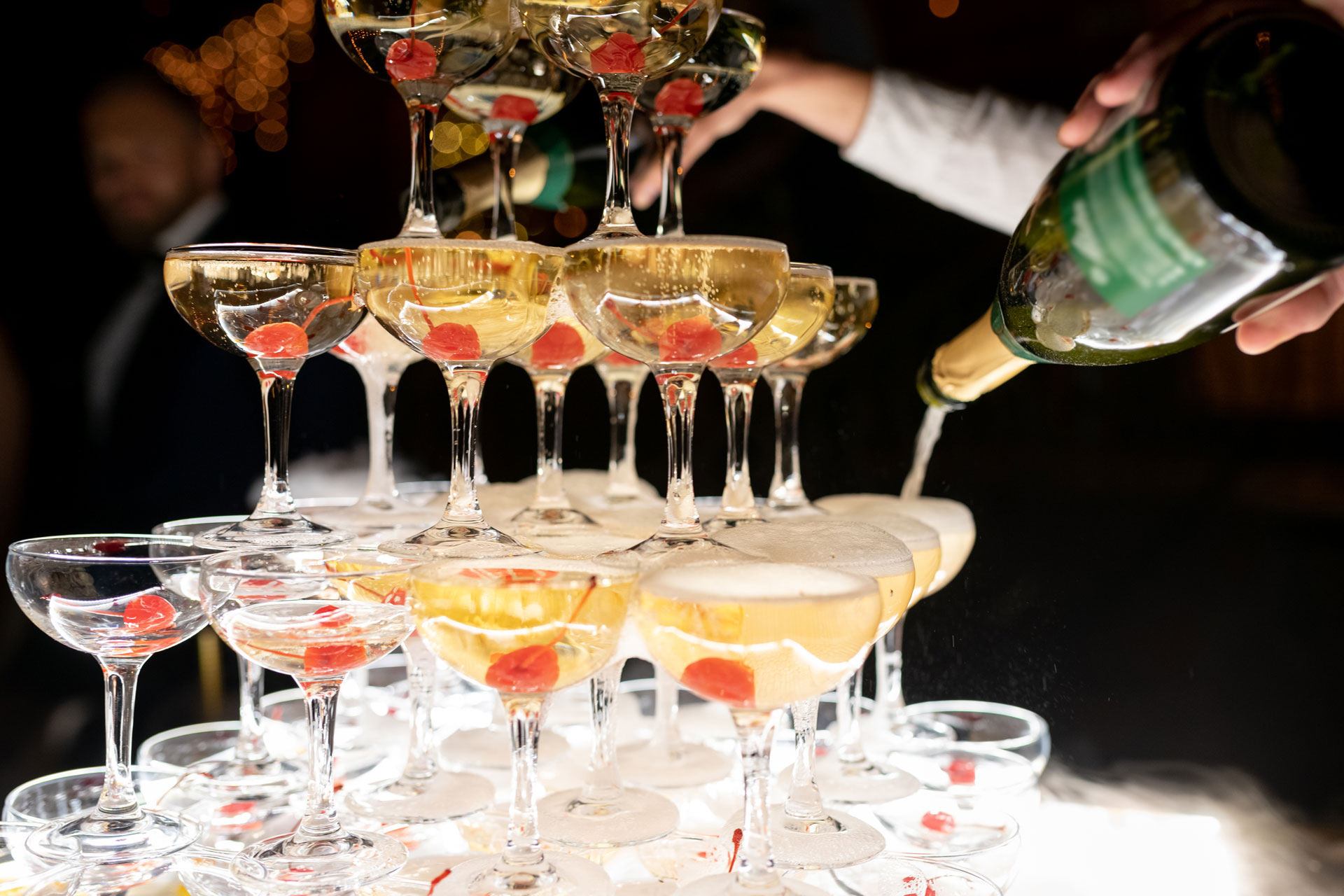
Getty Images
How Much Champagne Do You Need?
Deciding how much champagne to order for your wedding can be a tricky task – you don’t want to go overboard and spend more than you need, but equally you don’t want to run out too quickly. Clearly, it depends how many guests you’re having, and whether you want champagne just for the initial reception, or for toasts during the meal as well. If it’s just for the reception, Louis Roederer recommends aiming for half a bottle per head, and if you want champagne poured for the toasts, factor in another glass per person. Generally there are six glasses in a standard 750ml bottle.
Do You Have To Have Champagne At Your Wedding?
While champagne is a key part of the celebrations for many couples, it’s undoubtedly pricey – and of course not a necessity. So what are the alternatives? ‘If you’re out to really impress then you could up the game and go for a wonderful English sparkling wine instead,’ says wine expert Tom Gilbey. ‘But you could be making your guests just as happy by serving a crémant or a blanquette de limoux from France, or a bottle of fermented sparkling wine from the new world; and you’ll save yourself a packet. Crémant and new world sparkling tend to be about two thirds of the price of champagne and blanquette is generally about half. When these are good, all of them can be better than many champagnes.’

